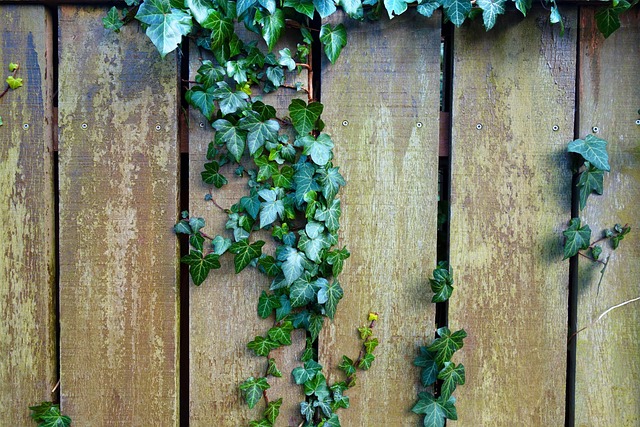Introducing Fence Staining and Sealing for Wooden Fences
Fencing isn’t just about defining your outdoor space; it’s an investment in your home’s curb appeal. Fence staining and sealing transform wooden fences from functional to striking features, offering both aesthetic and protective benefits. This comprehensive guide delves into the intricacies of fence staining, from understanding its advantages and exploring various types to mastering the art of application. We’ll also demystify sealing, ensuring your fence stays vibrant and durable for years to come.
- Understanding Fence Staining: Benefits and Types
- Preparing Your Wooden Fence for Staining
- Choosing the Right Stain: Color and Finish
- Applying Stain: Techniques and Tools
- Sealing for Protection: The Final Step
Understanding Fence Staining: Benefits and Types
Fence staining is a popular method to enhance the beauty and protect wooden fences. It involves applying a pigmented finish, usually in liquid form, to the surface of the fence. This process offers several advantages beyond aesthetics. First, it shields the wood from environmental elements like UV rays, rain, and snow, which can cause fading, cracking, and rot over time. By blocking these elements, stained fences tend to maintain their color and structural integrity for longer periods, reducing the need for frequent repairs or replacements.
There are various types of fence staining options available in the market. Water-based stains are popular for their low odor and quick drying time, making them user-friendly. Oil-based stains, on the other hand, provide deeper colors and better protection against water damage but may take longer to dry and emit a stronger smell. Each type serves different needs, catering to specific preferences and weather conditions, ensuring fences stay vibrant and durable for years to come.
Preparing Your Wooden Fence for Staining
Before applying any stain or sealer, preparing your wooden fence is a crucial step to ensure optimal results. Start by thoroughly cleaning the fence to remove any dirt, debris, or mildew using a pressure washer or a brush and cleaning solution. This initial cleaning will help the stain adhere better and create a smooth surface.
Once cleaned, inspect the fence for any damaged or rotten sections. Repair or replace these areas as needed to ensure the longevity of the fence. Filling in gaps with wood putty and sanding smooth ensures an even application of the stain. Additionally, consider scuffing the surface gently with fine-grit sandpaper to create a slightly rough texture that will help the stain penetrate better.
Choosing the Right Stain: Color and Finish
When selecting a fence stain, one of the most crucial decisions is choosing the right color and finish to suit your aesthetic preferences and the overall look you want to achieve. Fences can range from natural wood tones to rich, vibrant shades, each offering a distinct appeal. Consider the ambiance you desire—a subtle, natural blend or a bold, dramatic statement. The color spectrum includes browns, reds, greens, and even black, allowing for countless options.
Additionally, finishes play a vital role in defining the final appearance and protection of your fence. Water-based stains offer a low-odor, fast-drying option with a more natural look. Oil-based stains, while taking longer to dry, provide deeper colors and a richer finish, enhancing the wood grain. Each finish has its advantages, from easy application to enhanced durability, so choose based on your maintenance preferences and desired longevity of the stain.
Applying Stain: Techniques and Tools
Applying stain to a wooden fence is an art, requiring careful technique and the right tools for optimal results. Start by ensuring your work area is clean and free from dust or debris. Put on protective gear, including gloves and a mask, as some stains can be harmful when inhaled. Choose a brush with a fine tip for precise application, especially in tight corners and around intricate designs. A roller cover is ideal for larger surfaces, allowing for even coverage. Dip the brush or roller into the stain, then test it on a small, hidden area of the fence to ensure the desired color.
Apply the stain in long, even strokes, working from the top down. Allow each section to dry slightly before moving on to the next, as this helps prevent streaking. For a more even finish, consider using a paint tray and a putty knife to apply the stain, especially for hard-to-reach areas or where a more controlled application is needed. Remember, multiple thin coats are better than one thick coat to achieve a consistent, long-lasting color.
Sealing for Protection: The Final Step
After carefully staining your wooden fence to enhance its aesthetic appeal, the final step in maintaining its beauty and longevity is sealing it. Sealing acts as a protective barrier against the elements, preventing water, UV rays, and other harmful substances from penetrating the wood. It not only preserves the vibrant colors achieved during staining but also shields the fence from rot, mold, and mildew growth.
Choosing the right sealant is crucial. Look for high-quality, weatherproof options designed specifically for wooden fences. Apply the sealant evenly across the entire surface, ensuring thorough coverage. This final touch will transform your fence into a durable, eye-catching feature that stands the test of time, enhancing both its visual appeal and structural integrity.
